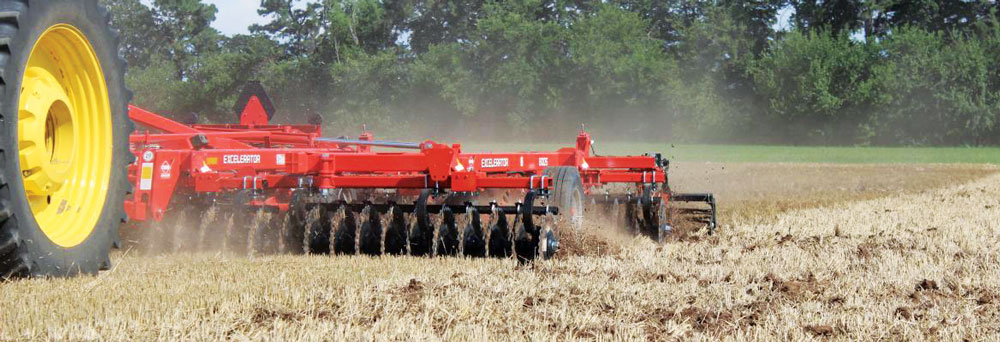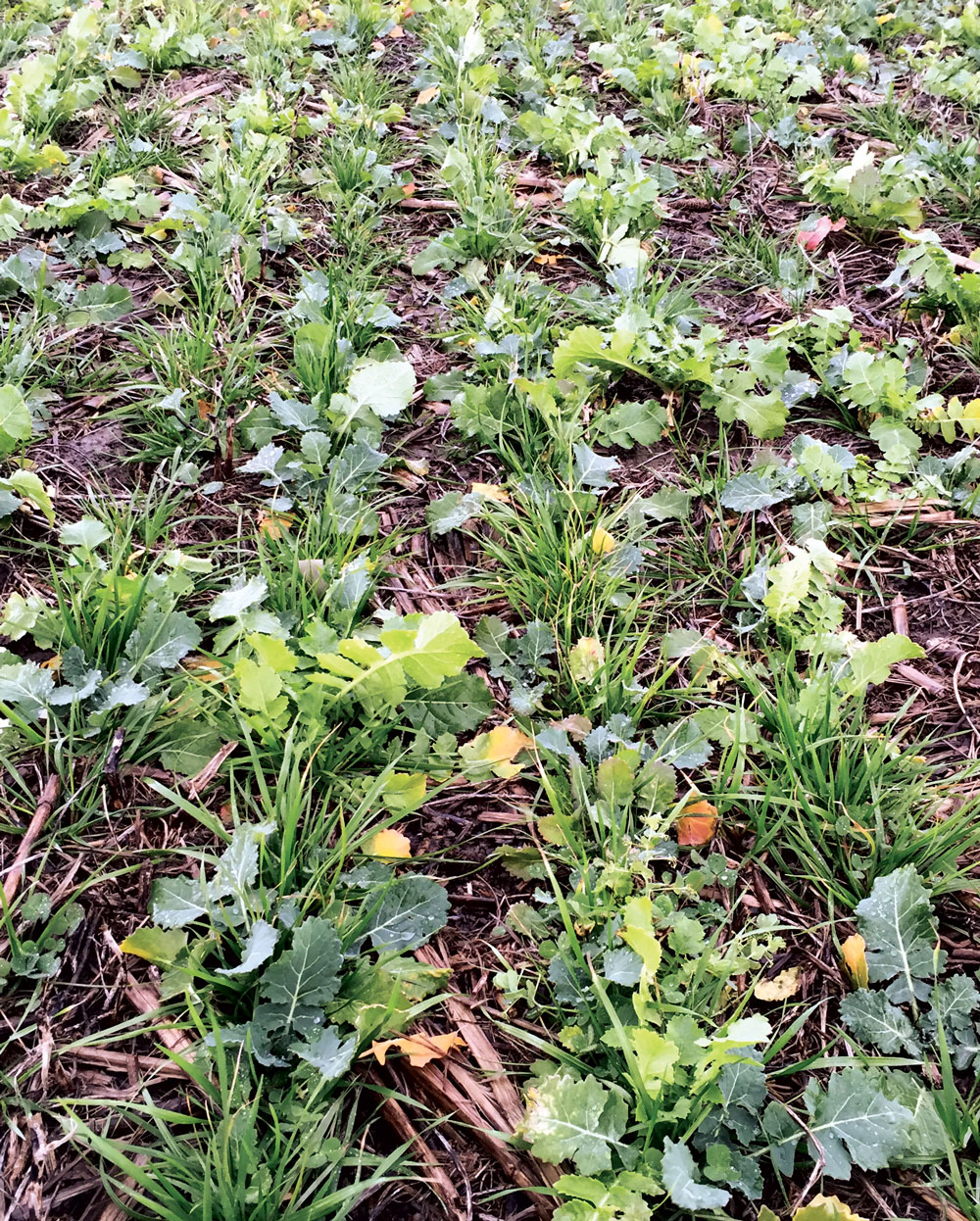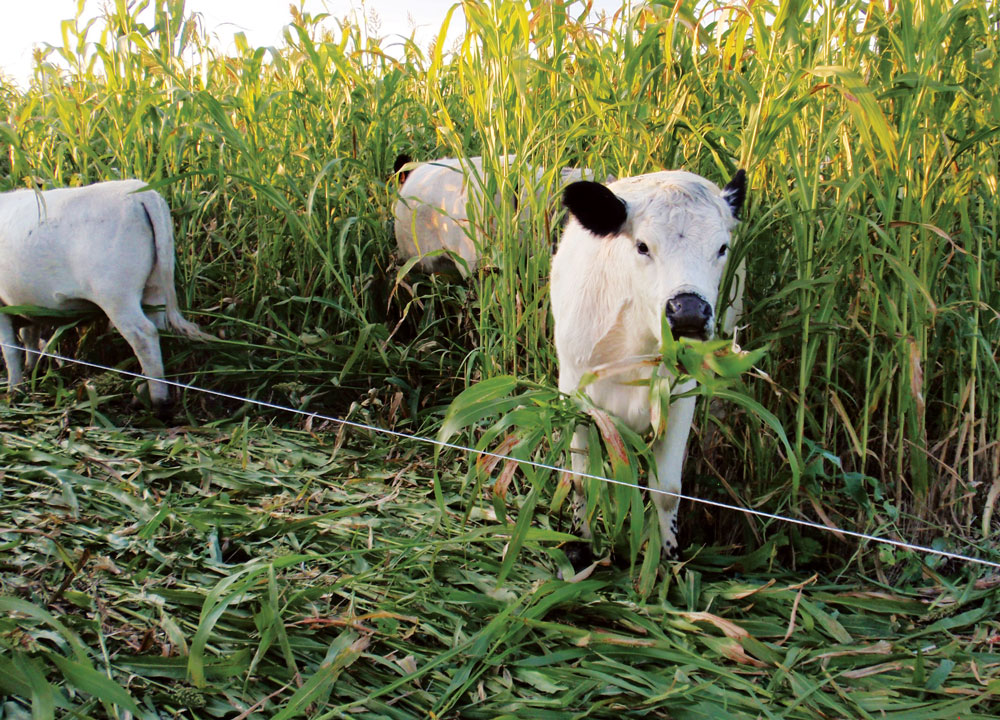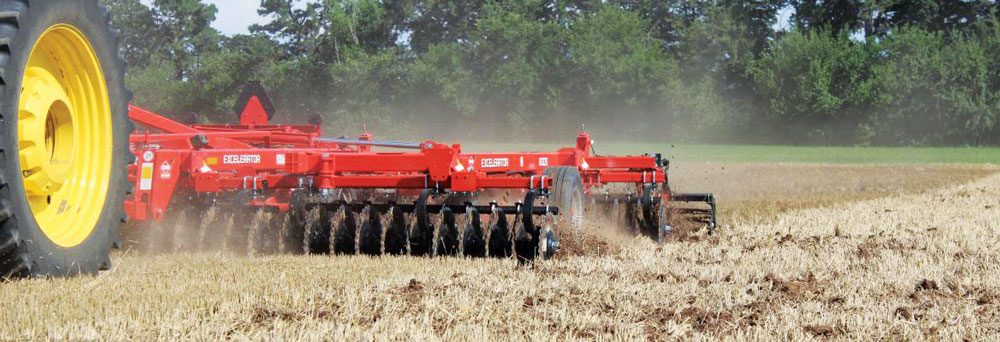Whether a grower is making multiple tillage passes or is a dedicated no-tiller, their reasons for adding cover crops to their operations are probably pretty similar: there’s a problem they’re trying to fix or a goal they’d like to achieve, whether that’s providing supplemental grazing for their livestock, suppressing weeds, cycling nutrients or simply improving the overall health of the soil.
However, some of the management practices they implement to find success with cover crops in their operations may vary based on their tillage systems, and what works on one farm may not yield the same results on another.
Regardless of the tillage tools used, growers and cover crop experts agree that with careful planning, any farmer can successfully incorporate cover crops into their systems.
1. Determine Your Goal
The first step to succeeding with covers is to start with the end in mind: What do you want to accomplish with cover crops?
Keith Berns, co-owner of Green Cover Seed in Bladen, Neb., says this is the first piece of advice he offers every farmer interested in cover crops, because they need to understand why they’re trying this practice in the first place.
“Are you doing this because some farm magazine told you? Or are you doing it because you have a specific goal in mind?” he asks.

Growers using vertical tillage can utilize their tools for seeding cover crops. Cory Ritter uses an Excelerator (pictured) to work the ground ¾–1 inch deep after his cover crop seed and fertilizer have been double-spread, while Alan Weber prefers to use his Landoll on his corn stubble before coming across with his Pendulum spreader to seed his covers. Photo Courtesy of Kuhn Krause
Usually growers will have two to three goals in mind, which may include nitrogen fixation, breaking up compaction, reducing erosion, building biological matter, suppressing weeds or providing supplemental forage for livestock.
From there, growers can determine what cover crops they should be aiming to include in their operation, as different species can provide different benefits.
When Alan Weber started using cover crops in the early 2000s on his family’s 875-acre crop and livestock farm in Pettis County, Mo., his goal was primarily lowering the farm’s herbicide costs.
He explains that when he entered the workforce in the 1980s, corn was $1.60 per bushel while soybeans were $4.80. Because of this, he pursued a full-time career in the biofuels industry to help increase demand for the farm’s products, and he also wanted to lower input costs.
He had been reading about the allelopathic effects of cereal rye on summer annual weeds like pigweed and waterhemp and wanted to see how effective it was. Weber received a producer cost-share grant from the Missouri Department of Agriculture and conducted some trials with cereal rye to determine whether the effects were strong enough to avoid an herbicide burndown.
He discovered that cereal rye did significantly reduce weed stand counts, specifically pigweed, but not enough to skip a burndown completely.
“My first experiences were positive and it did show me what a cover crop could do,” Weber says.
He stuck with cover crops and as he gained more experience his goals changed. Today, he’s more interested in increasing soil organic matter levels to increase his soil’s water infiltration and water-holding capacity.
“My grandfather claimed that on the soil that we farm for row crops, we’re always two weeks away from a drought,” he says. “And it’s proven time and again that if you can decrease that stress a little bit on your crop by having additional moisture or limiting that evapotranspiration by having some cover or residue on top, you will gain some benefits.”
2. Figure Out When, Then How
Getting the cover crop seeded is one of the most common challenges growers face when using cover crops, which is why Nick Bowers, co-owner of KB Seed Solutions in Harrisburg, Ore., tells growers to first determine when they’re going to seed their cover crop, then decide how they’re going to seed it. After those two factors have been determined, they can select their cover crop species.
“The when and the how makes a big difference on what cover crop you pick,” Bowers explains.
For example, if a grower wants to seed his covers in July, he’ll probably be using radishes or a combination of radishes with something else. If his goal is August or September, then he’s probably looking at annual ryegrass with another species. If he’d prefer to seed after harvest in November, he’ll probably use cereal rye.
“You can’t swap those around at all, because annual ryegrass and radishes don’t work if you plant them in November,” Bowers says. “Cereal rye is probably not a good choice in July.”
3. Plan, Adjust Your Tillage
Tillage operations will also impact the decision as to when a cover crop is seeded, Bowers says, because if a grower wants to do a tillage pass after harvest, he won’t have the option of flying his cover crops into a standing crop in the summer or fall.
Berns agrees that growers need to consider the window of time they need to give a cover crop to grow and make necessary adjustments to their tillage programs. If a grower is tilling 8 times a year before the crop is planted, which Berns says isn’t uncommon in a tillage-heavy rotation, then there’s never a period of adequate time to let the cover crop grow.
“You have to do something different in order to just give at least a six-week window of time for your crop to grow and accomplish something,” he says.
The amount of time that cover will need depends on what the grower’s goals are, as Berns says in some cases 30 days to six weeks may be all you need to accomplish your goal.
Bruce Weaver, a cover crop user and seed dealer for Byron Seed in Flat Rock, Ind., says that he has worked with farmers who are interested in cover crops but still want to do fall tillage. In this case, he recommends choosing just one field, 40 or 60 acres, to be committed to cover cropping every year. After some time, they can evaluate the benefit they’re seeing on that field.
“What that’s going to mean is, let’s plant a little bit shorter-season corn, so we’re going to harvest it first,” he explains. “I’m going to get you to come in right behind the combine with your tillage tool and then plant your cover crop seed.”
This may mean that a grower will have to hire another person to help run some equipment during harvest, just so someone is responsible for getting that seed in the ground as soon as the cash crop is off.
“It comes back to understanding when that seed needs to be in the ground, what your deadline dates are for the various species, and that you’re going to get it done,” he says.
Weaver also uses tillage on his farm of corn, soybeans, hay and sometimes winter barley, and has had success fitting cover crops into his tillage system.
His tillage strategy depends on the crops he’s growing. Before a new seeding of grass and alfalfa, Weaver will use a disk harrow to loosen the dirt and level it off before coming in with a cultipacker to create a fit and firm seedbed.
After 3-4 years he’ll take the alfalfa stand out, leaving 8-10 inches of topgrowth, which he’ll turn under with a moldboard plow.
“That green topgrowth provides food for the microorganisms in the soil and for the earthworms,” he explains. “So anytime we use a plow and turn the soil over, we want to always be sure that we’re turning under something, we’re not just turning bare dirt under.”
He also follows a hay field with corn, so most of the corn is going into a field that has been freshly worked. After using the moldboard plow, he’ll also run a disc to smooth it down and level it out before planting corn.
Following corn he may no-till drill a field of winter barley, which will then come off around June 10, followed by double-cropped soybeans. Following the soybeans, he may aerial seed or no-till drill a winter cover crop like cereal rye or annual ryegrass, depending on the field. After that, he works the ground again for the next hay stand.
“My goal as a farmer is to have every acre of my farm green all year long, so as soon as we take off one crop, we’re planting something else back there, so that there’s no time in the year where we don’t have a living plant out there growing,” he says.
4. Consider Combining Tillage with Seeding
If a farmer is using vertical tillage, he could combine cover crop seeding with his tillage pass by either broadcasting the seed first and then running the vertical tillage tool, or adding a spreader to the tool to complete both in one past.
Both Cory Ritter and Weber use vertical tillage in their operations and have found it to be effective with their cover crop programs.

Instead of deciding which cover crops to seed and then figuring out how to fit it into their operations, Nick Bowers of KB Seed recommends growers first think about when and how they’re going to seed their cover crops, then select a species. For example, this mix of radishes and ryegrass will need to be seeded earlier, so if a grower can’t seed covers until November after corn harvest, then he should opt for a species like cereal rye instead. Photo Courtesy of Nick Bowers
Since 2015, Ritter and his father, Tom, have been using a Kuhn Krause Excelerator vertical tillage tool on their 2,100-acre farm of corn and soybeans in Blue Mound, Ill. They run over all of their corn stalks in the fall, as well as all of the soybean stubble ahead of the planter in the spring. Depending on the year, they may make another pass over the cornstalks again in the spring.
For the fall of 2018 and spring of 2019, they seeded 360 acres of cereal rye ahead of both corn and soybeans.
When Ritter first tried cover crops about 7 years ago, he started with a mix of tillage radishes and oats flown on 40 acres. He chose this so he wouldn’t have to worry about seeding them or terminating them in the spring.
But using tillage radishes meant having to take the corn off at a higher moisture than they preferred, so they tried cereal rye and have been using it the last 3 years.
With cereal rye, they found it gives them a longer window to get the covers seeded — Ritter aims to have them seeded by end of October — which gives them more flexibility during harvest when they are already short on equipment, labor and time.
“If I can get it done sooner, it’s better, but I want to make sure everything’s off and the conditions are right,” he explains.
To seed the cover crops, Ritter’s Christian County FS dealer mixes the seed with Ritter’s dry fertilizer and double-spreads it over his acres after harvest. Ritter notes double-spreading is key to a good stand.
“If they don’t double-spread, it doesn’t get as good of coverage,” he says. “But with the double-spreading, it looks better than some of the stuff I’ve drilled in the past.”
After the seed and fertilizer have been spread, Ritter comes in with the Excelerator and works the ground about ¾-1 inch deep, which helps with both seed-to-soil contact for the cover crops, and with breaking down some of the corn residue.
“Just lightly throwing some dirt on top of it works really well,” he says, noting that seeding the covers this way allows him to get more acres seeded, because it doesn’t take as long as drilling.
He aims to have a rain in the forecast when the covers are seeded because if the ground is dry, the seed will just sit there. One year he recalls following right behind the spreader with his Excelerator because rain was in the forecast that night and he didn’t want the seed to wash away.
“There’s a few little challenges with the weather,” he says.
Weber’s system is similar to Ritter’s. Using a Landoll vertical tillage tool, he makes a pass over the corn stalks in the fall, and most of the time will seed a cover crop on all of those acres. In the spring, he’ll either no-till soybeans into those covers or, depending on the ground conditions, will run the Landoll again.
He doesn’t do any vertical tillage following soybean harvest in the fall, and in the spring he’ll either no-till corn or run the Landoll and then plant.
When Weber began using cover crops, he started by drilling them. But with a full-time job, the biggest challenge he faces is time, and he’s found that he can seed more acres faster by using the Landoll rig on corn stubble, and then coming across with a Pendulum spreader.
“Drilling is probably year-in-year-out more effective because you get better seed-to-soil contact,” he says. “But we’ve had very good luck with spreading that seed right before rain is in the forecast. There’s usually some rain in September or early October.”
He adds that they also have a DMI Crumbler, so he can also run that over the top to improve seed-to-soil contact. So far, he has yet to not have a good stand of covers.
Weber is primarily seeding cereal rye, as he says it’s “by far the easiest to implement.”
“It’s the most forgiving crop from my experience in terms of timing, when you get it planted. And its ability to survive and thrive.”
He’s primarily seeding cover crops after corn — and in 2018, 100% of his corn acres were seeded to covers — because he found it much easier to implement them after corn in terms of timing and labor.
5. Think Through Termination
In addition to planning out when and how the cover crop will be seeded, growers also need to think through the when and how of cover crop termination, if the cover does not winterkill.
Ritter, Weber and Weaver all terminate their covers with herbicides, and have had good success with it.
On Weaver’s operation, he’ll use Roundup on annual ryegrass with crimson clover, making sure he times it right to get an effective kill.

Keith Berns of Green Cover Seed says that depending on the cover crop species and time of year, cover crops can reach 5-6 feet in height, as seen here. For those who want to till under their cover crops, this may be too much plant material for their tillage tools to handle. In this case, Waverly, Kan., no-tiller Darin Williams is using this mix of sorghum sudangrass, turnips, radishes, buckwheat, sunn hemp and triticale as forage for his British White Cattle. Photo Courtesy of Darin Williams
“We tell guys, don’t go out there and try to kill it unless you’ve mowed your lawn at least once in the spring,” he says, noting that the recipe for terminating annual ryegrass is to do it on a bright sunny day between 10 a.m. and 4 p.m., when the temperature is at least 50 F and a warming trend. “If you follow that recipe, you can kill it right away.”
With cereal rye, he says it’s relatively easy to kill with Roundup and can be terminated earlier than annual ryegrass. He doesn’t typically use tillage for termination, but notes that if he needed or wanted to, he could turn the covers under with the moldboard plow.
Ahead of corn, Ritter will typically use a normal pre-emerge application with some 28% liquid nitrogen along with an atrazine-containing product for some residual. He’ll also spike it with some glyphosate to help kill the cereal rye.
The herbicide rate depends on the size of the cover crop, noting that he doesn’t want to be stingy on it.
“If you only wound it, it makes it harder to kill going forward,” he says.
Ahead of soybeans he runs a normal burndown program. So far he hasn’t struggled to get the cover crop killed yet.
He pays close attention to the cover crop’s height when deciding when to terminate it. Ahead of corn he lets it reach 8-9 inches, while ahead of soybeans he’s willing to let it get a little taller.
“I’ve had some failures where I let it get too tall, then sprayed it and it fell down,” he says. “As it was dying, it kept the soil really wet underneath.”
He adds that he works closely with the people at Christian County FS and trusts their recommendations, as they’ve been “spot on since I started doing this.”
Berns notes that growers using tillage still need to consider the amount of residue from the cover and think through how they’re going to handle it.
“We’ve had some cover crops that if they’re growing during the summer and have 60 days to grow, can reach 5-6 feet tall,” he says. “Normally you’re not planting your crop in there until the next year, so that stuff falls to the ground and starts to decompose. But if you go out there and try to disc all of that in, it would be a lot of material to try to get passed through your tillage equipment.”
If a grower is not tilling the cover under, he’ll need to consider if his planting equipment can handle the amount of residue leftover. This is another reason why Ritter does not let the cover crop grow taller.
They currently run an older John Deere planter that Ritter says is set up for conventional tillage. To follow heavier cover crops, the planter needs more down pressure, and Ritter is also looking into attachments that can crimp and roll the cover crops. He says the whole farm is now in an EQIP program, which will provide some funding for upgrades to the planter.
When it comes to termination, growers need to consider what is going to be best for the next crop, Berns says. For example, if they’re in a dryland region, they’ll probably need to terminate that cover crop sooner to ensure the crop doesn’t take up too much moisture from the soil.
6. Be Committed, Set Yourself Up for Success
When Ritter started with cover crops, he decided he was going to commit to them for at least 3 years.
“There’s nothing in agriculture where you can make a decision off of a 1-year trial,” he says. “After 3 years, I thought I was doing pretty good, so I’ll do a little more. Then that’s when I started tweaking.”
His advice to anyone getting started with cover crops, regardless of their tillage practices, is to try it for 3 years.
“Until you get 3 years under your belt, you’re still in a learning process and you don’t even know what’s going on,” he says. “After my third year, I started thinking let’s dive into this a little bit more and figure it out. After 3 years, it was getting used to the whole thing.”
He also recommends growers make it easy on themselves the first time. He suggests doing as he did, by flying on a cover crop that will winterkill.
“Tillage radish, turnips, oats, or a mix of something like that. Fly it on at the end of August — you don’t even have to worry about getting it planted,” Ritter says. “Try to harvest that crop a point or two sooner than you wanted to. And just let Mother Nature do its thing.”
He notes that if the farmer doesn’t like how it turned out, there’s still the opportunity to run a field cultivator through it in the spring.
“I want them to try something easy and something they don’t have to manage a whole lot,” he says. “Then we can go to the next step.”
Weber agrees with Ritter that growers need to give their cover crop some time before making modifications to their programs. He recommends growers start as he did, by identifying an issue they want to fix on a particular farm or field, then looking at which cover crops will help solve that issue.
“After you have that list, try to find ones that work in your current operation with your management practices,” he says. “Try that on a limited basis and after you gain experience, then start trying to modify, if you need to meet your management strategies to optimize the system.”
He also recommends starting with something flexible like cereal rye so the chances of having a positive experience are higher right from the start.
Bowers agrees with committing to cover crops for at least 3-5 years, and adds growers must be willing to manage them like a regular crop. They must have the mindset it’s going to be a success.
In fact, he advises growers to think of cover crops like marriage.
“If you walk down the aisle and you’re thinking ‘This is a stupid idea,’ it’s probably a stupid idea. If you don’t think cover crops are going to work — it’s probably not going to work,” he says. “You’ve got to believe it’s going to work and you’ve got to want to make it work, because if not, the first time something goes sideways, you’re going to say, ‘Well that was a bad idea’ and out the door it goes.
“You’ve really got to believe that this is going to help you and be willing to manage it and say, ‘I’m going to try this for 3-5 years to make a difference.’”





Post a comment
Report Abusive Comment